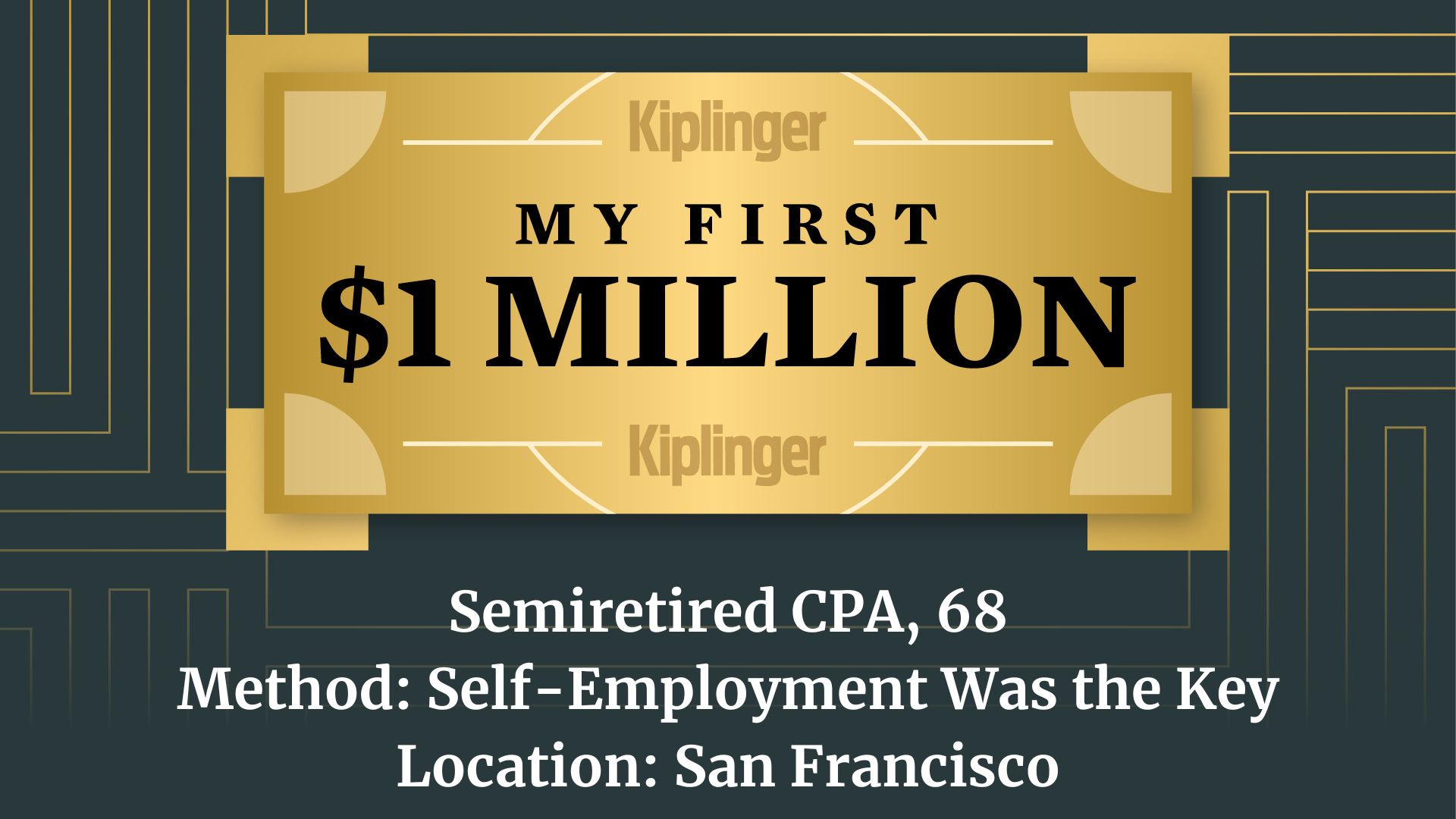First 100 Days: Trump's Impact on Your Finances
April 30 will mark the end of Trump's first 100 days in office. Here are some opportunities to consider regarding investing, interest rates and tax cuts as the financial landscape shifts under his administration.


Since FDR, the first 100 days of a presidential term are viewed as a benchmark for accomplishments. President Donald Trump’s second term is bringing a whirlwind of changes.
Whether you love or hate what is happening in Washington (or maybe some of each), there are financial opportunities that you can use to your advantage, if you know where to look.
Shaky markets
The market started the year at or near all-time highs, and it would be an understatement to say that new tariffs have caused some extra volatility, though most investors are still in a much better position now than they were 12 months ago.
From just $107.88 $24.99 for Kiplinger Personal Finance
Become a smarter, better informed investor. Subscribe from just $107.88 $24.99, plus get up to 4 Special Issues

Sign up for Kiplinger’s Free Newsletters
Profit and prosper with the best of expert advice on investing, taxes, retirement, personal finance and more - straight to your e-mail.
Profit and prosper with the best of expert advice - straight to your e-mail.
However, it is important to note that the past two years (2023 and 2024) gave us over 20% growth each year. That doesn’t happen very often (the last time was right before the dot-com bubble in the late 1990s), and some analysts have been predicting we were overdue for a crash for well over a year now.
Whether the current administration is to blame or not, the adage “buy low, sell high” should still apply. Even though there have been some losses over the last couple of months, it may not be a great idea to invest a lot more into the market when it is still near all-time highs. Investors could take their cue from Warren Buffett, who currently has more than 50% of Berkshire’s assets in cash.
Interest rates
There is a great opportunity today to lock in interest rates on fixed/guaranteed accounts (think Treasuries, CDs or fixed annuities), which are still giving yields higher than almost any time in the last 25 years.
With the markets so volatile, it may be a good time to shift from high stock exposure to cash or equivalents.
Trump made it clear he would prefer to see interest rates drop soon, so that mortgages might become more affordable (and to encourage business growth).
Investors should therefore take advantage of today’s high interest rates for money on deposit and perhaps wait a bit, if possible, before buying a home, in case interest rates continue to drop over the next few months.
Shifting winds on ESG
An acronym getting a lot of press lately is ESG, or environmental, social and governance, as an investing principle.
Trump is certainly no friend to climate change activism policies (as many of his first executive orders indicate), which should ultimately result in much of the funding drying up for environmental programs.
For-profit and non-profit organizations in environmental and related fields have historically received much of their funding from the government.
While in the short term, this loss of funding will cause chaos in the industry and may put some companies out of business, the organizations that are able to secure alternate funding from either grassroots donations or high-rolling elite donors should have a more sustainable financial future without being dependent on the government.
In the next few years, it is probably a risky move to invest in these sectors.
Tax cuts expiring or not?
The biggest financial question coming into the 2024 election was the possible extension of the Trump tax cuts.
Most of the 2017 Tax Cuts and Jobs Act (TCJA) provisions are set to expire in 2026, which would mean that individual tax rates would rise, and many pass-through businesses, such as LLCs, would also lose the 20% flat deduction. (Notably, C corporation tax rates were permanently lowered to 21%, so this provision will not expire in 2026.)
The estate tax exclusion is also set to drop in half in 2026, to about $7 million per person, depending on the inflation calculation. It’s $13.99 million for individuals right now.
The Trump administration made extending these provisions a top priority, and it appears very likely that some kind of bill will be passed later this year.
However, the details are still very unclear. Compromises will have to be made, due to ballooning debt and Trump’s addition of several provisions to be included in the “one big, beautiful bill.”
The most contentious provision will likely be the SALT (state and local tax) deduction, which is limited to $10,000 now and primarily affects wealthier taxpayers in higher-tax states.
Trump would like to raise or eliminate this cap, but the cap is a big part of what paid for the original tax cuts in the first place.
What can you do?
So, what can investors do with all this information? It is probably safe to assume that at least the individual tax rates get extended, at least for a few years.
However, most experts agree that tax rates in general will need to go up eventually. If you have a substantial amount of money in IRA or 401(k) plans, the sooner you can shift those to a tax-free status the better (by converting to Roth or to permanent life insurance). It is much better to pay a little more tax now (on the conversions) than a lot more later.
Most investors should spread out the conversions over several years, to “fill up” the current tax bracket without popping into the next bracket.
Reconsider the myth that “I will be in a lower tax bracket when I retire.” If you want to have the same or better lifestyle in retirement as you had when working, you will likely be in the same or higher tax bracket in retirement, unless you have done the proper work to convert your tax-deferred assets to tax-free.
Conclusion
Don’t let short-term changes in Washington overwhelm you. Political winds come and go, and your long-term planning should be relatively unaffected, as long as you keep your eyes open and jump on opportunities as they arise.
Take advantage of today’s high-interest-rate environment to potentially rebalance away from shaky equities that could still be near all-time highs. Reduce future taxation by converting to Roth or other tax-free buckets. But don’t allow fear or uncertainty to consume you or influence your decision-making.
By focusing on reducing or eliminating the three biggest killers in retirement/investment planning (risk, fees and taxes), you can set yourself up for long-term financial success regardless of who is in charge in Washington.
Related Content
- What’s Happening Now With Trump Tariffs? April Updates to Know
- Social Security Under Trump: Live Updates to Keep You Up to Date
- Trump's ‘One Big, Beautiful Bill’ With Trillions in Tax Cuts: House Moves Forward
- Trump to Tariffs: How Retirees Can Manage Market Turmoil
- What Trump Has Done With Medicare So Far
Profit and prosper with the best of Kiplinger's advice on investing, taxes, retirement, personal finance and much more. Delivered daily. Enter your email in the box and click Sign Me Up.

Daniel Razvi is an attorney who owns Higher Ground Legal, a nationwide law firm, specifically focused on trusts, wills and taxes. Also a partner in Higher Ground Financial Group with his father, Imran Razvi, Daniel is passionate about assisting clients with planning for retirement, minimizing risk, fees and taxes. He thoroughly enjoys designing plans to meet the varying needs of his clients. Daniel has appeared on Fox Business and can be heard on weekly radio shows on AM 570 “The Answer” in Washington, D.C., and 560 KSFO in San Francisco. His teaching style and advice have been invaluable to listeners.
-
 'Donroe Doctrine' Pumps Dow 594 Points: Stock Market Today
'Donroe Doctrine' Pumps Dow 594 Points: Stock Market TodayThe S&P 500 rallied but failed to turn the "Santa Claus Rally" indicator positive for 2026.
-
 The Wealth Equation: Balancing Money and Stress
The Wealth Equation: Balancing Money and StressSponsored Don’t let assets be a liability that strains your family.
-
 Is Your Emergency Fund Running Low? Here's How to Bulk It Up
Is Your Emergency Fund Running Low? Here's How to Bulk It UpIf you're struggling right now, you're not alone. Here's how you can identify financial issues, implement a budget and prioritize rebuilding your emergency fund.
-
 'Donroe Doctrine' Pumps Dow 594 Points: Stock Market Today
'Donroe Doctrine' Pumps Dow 594 Points: Stock Market TodayThe S&P 500 rallied but failed to turn the "Santa Claus Rally" indicator positive for 2026.
-
 Is Your Emergency Fund Running Low? Here's How to Bulk It Back Up
Is Your Emergency Fund Running Low? Here's How to Bulk It Back UpIf you're struggling right now, you're not alone. Here's how you can identify financial issues, implement a budget and prioritize rebuilding your emergency fund.
-
 An Expert Guide to How All-Assets Planning Offers a Better Retirement
An Expert Guide to How All-Assets Planning Offers a Better RetirementAn "all-asset" strategy would integrate housing wealth and annuities with traditional investments to generate more income and liquid savings for retirees.
-
 Forget FIRE: Why ‘FILE’ Is the Smarter Move for Child-Free DINKs
Forget FIRE: Why ‘FILE’ Is the Smarter Move for Child-Free DINKsHow shifting from "Retiring Early" to "Living Early" allows child-free adults to enjoy their wealth while they’re still young enough to use it.
-
 7 Tax Blunders to Avoid in Your First Year of Retirement, From a Seasoned Financial Planner
7 Tax Blunders to Avoid in Your First Year of Retirement, From a Seasoned Financial PlannerA business-as-usual approach to taxes in the first year of retirement can lead to silly trip-ups that erode your nest egg. Here are seven common goofs to avoid.
-
 How to Plan for Social Security in 2026's Changing Landscape, From a Financial Professional
How to Plan for Social Security in 2026's Changing Landscape, From a Financial ProfessionalNot understanding how the upcoming changes in 2026 might affect you could put your financial security in retirement at risk. This is what you need to know.
-
 Healthy to 100: Secrets from Countries Where Retirees Age Best
Healthy to 100: Secrets from Countries Where Retirees Age BestLongevity is a team sport, according to author Ken Stern. Here's the secret sauce for living long, healthy lives from countries such as Italy and Japan.
-
 My First $1 Million: Semiretired CPA, 68, San Francisco
My First $1 Million: Semiretired CPA, 68, San FranciscoEver wonder how someone who's made a million dollars or more did it? Kiplinger's My First $1 Million series uncovers the answers.